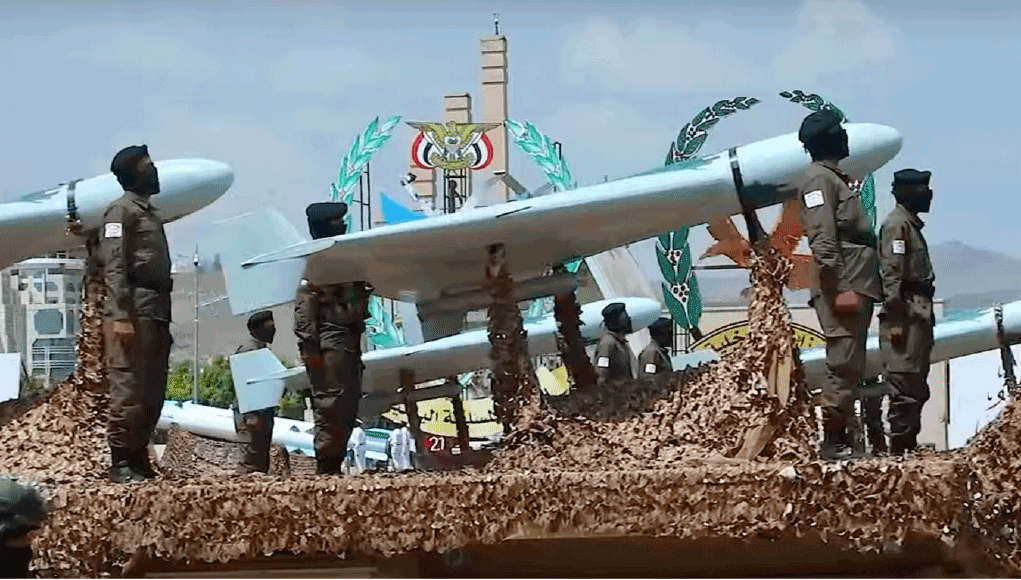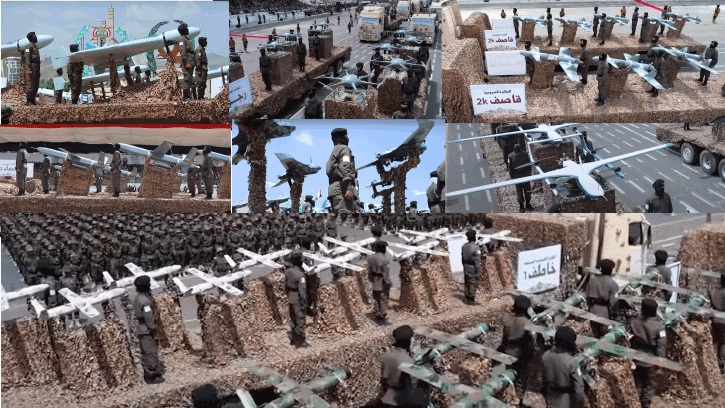New ballistic, cruise and loitering missiles were shown by the Houthis in the recent military parade in Sanaa, Yemen. We reviewed the new cruise missiles, ballistic missiles, and naval attack weapons in three recent posts. Parallel to the development of ballistic missiles, Iran is pursuing various types of aerial weapons based on unmanned aerial systems technologies.
Shahed 131 and 136 are two models that have recently captured media attention. Still, these simple and rudimentary delta-winged ‘flying bombs’ are only one type of a wide family of loitering weapons that Iran has used to hit targets far beyond its borders, dating back to the attack on Saudi oil fields in 2019.
Among many types of loitering missiles and attack drones displayed was the local version of the Iranian Shahed 136 – the Wa’id, new models of Samad and Qhasef, loitering missiles, Rased weaponized mini-drones, VTOL variant of Mersad-2, and the Masir hexacopter weaponized drone that was also demonstrated in formation flight.
Please subscribe to read the full article.
Related posts in this report:























